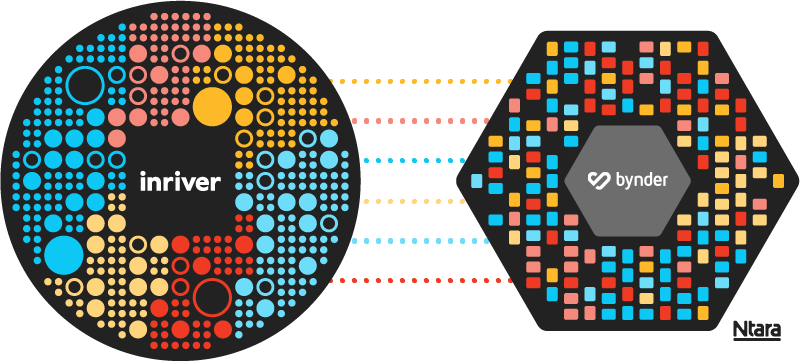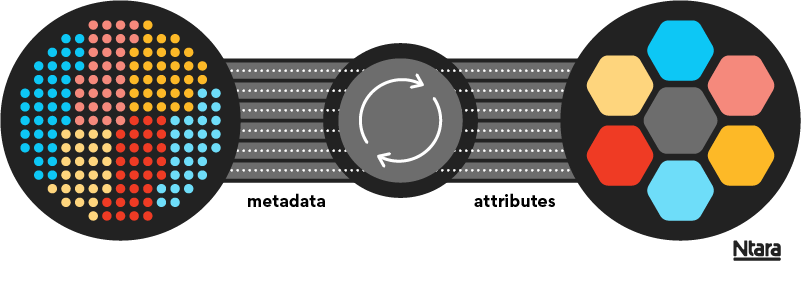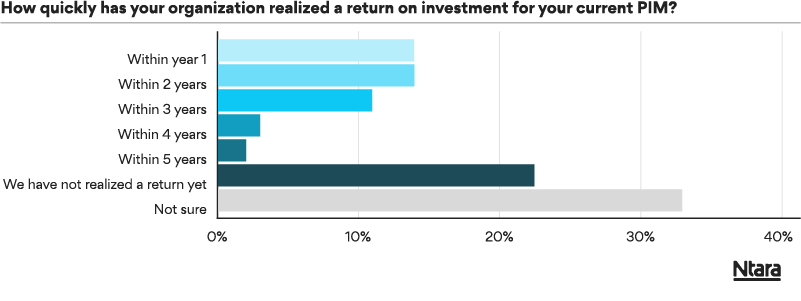Do you think a single source of truth is enough for digital commerce today?
We don’t.
For effective omnichannel growth, your product data needs to work smarter and faster, reaching the right people and channels seamlessly.
That’s exactly what system integration—like linking PIM to DAM—achieves. Our inriver-to-Bynder connector helps bridge these systems, paving the way for an exceptional product experience (PX).
Intrigued by what this automation can do for you? Here’s a closer look.

Why inriver and Bynder make a perfect match
Fun fact: inriver PIM and Bynder DAM are owned by the same parent company. It’s no wonder they work so well together. But there’s more to the story.
Bynder is designed for seamless configuration. It also features webhooks, which are notifications of requests (often with a data payload) that can be delivered to an HTTP endpoint.
On the flip side, inriver can expose an HTTP endpoint to receive those notifications. Not all PIMs have this capability. Some platforms use an approach that uses middleware to process these notifications, which is another valid approach with some pros and cons. With inriver, it’s already part of the solution.
Preparing for inriver + Bynder integration
The key to connecting inriver PIM to Bynder DAM lies in proper preparation, bringing the systems in sync, and designing a model that meets your objectives.
First, you might need to perform a one-time migration to bring data from DAM into PIM (or vice versa). Our client, Columbus McKinnon, took this approach.
With a strategy set for digital transformation, the company recognized the need for an advanced DAM system and chose Bynder. We first migrated their asset data from PIM into Bynder. Then, we established a connection between inriver and Bynder to streamline and automate how product data and assets are created, managed, and enriched.
By modernizing its technology infrastructure, Columbus McKinnon is positioned to deliver significant dividends in the coming months, particularly in powering content experiences across various channels, such as web and mobile engagement.
Bringing the systems in sync
PIM and DAM systems have their own languages. That’s why, even with prebuilt connectors, we need to configure the systems so they can talk to each other.

Before integration, we compare DAM from a metadata perspective with PIM from an attribute perspective. Then, we design the model and connect the systems so that the values match up and the data stays in sync.
Deciding how the data should flow
A successful connection is only one part of the equation. Next comes determining how the data should flow. Based on extensive experience with DAM and PIM, here’s our preferred approach:
1: An event in DAM triggers action
When an event occurs in DAM—like an asset being created, updated, or deleted—that action is transmitted to PIM via webhooks.
2: PIM ingests the data accordingly
On the PIM side, the system receives the HTTP notification and determines whether to react. If it recognizes the need for a reaction, the data is linked.
3: Product information backfills in DAM
Once we’ve hooked the asset to the product information, we can take the product information from PIM and bring it back into DAM to populate metadata fields. This ‘closed loop’ makes the asset more findable, searchable, and discoverable in DAM with no manual work required.
Working smarter and faster with PIM + DAM
A recent study shows that only 28% of PIM users saw measurable ROI within the first two years of implementation. What gives?

To drive ROI, your data must help you work smarter and faster toward omnichannel growth. But that’s nearly impossible with siloed systems and slow, manual processes.
When inriver PIM connects to Bynder DAM, users no longer need to track down data or waste hours updating metadata fields. Not only does the data flow easily between systems, but enrichment happens automatically.
You also gain the ability to share a simple URL that always ties back to the latest version and all its necessary context. Since URLs are small and light, the organization also benefits from lower costs associated with file storage and transportation.
What does all this mean for your PX? It activates your product data, getting it into the hands of content creators, into emerging tech like GenAI, and across all the proper channels faster than ever before.
With the ability to launch quickly and provide an omnichannel PX, you gain a competitive advantage.
How Ntara can help
Connecting inriver PIM to Bynder DAM is a win-win. And with pre-built technology, already proven by businesses like Columbus McKinnon, it’s more accessible than ever.
Still, it’s not every day that a team needs to connect two critical systems and bring their data in sync. It’s a nuanced project that often extends beyond the capacity of even the most well-versed PIM or DAM product owners.
Ntara is here to help. As an experienced inriver and Bynder partner, we know PIM and DAM—and we understand how to combine the two systems to deliver an exceptional PX. We’re not just integrators; we implement and consult, too. So, whatever data gaps you have, we’ve got you covered.
Ready to discuss your inriver + Bynder connection? Get in touch.